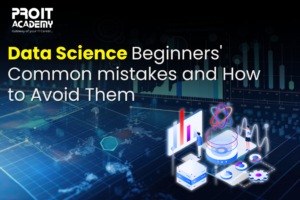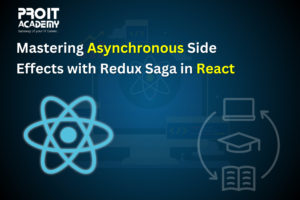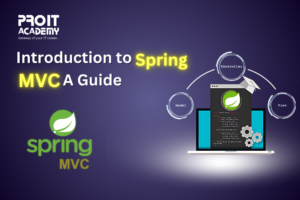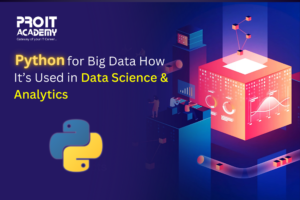We’ll discover how to build different machine-learning algorithms from the ground up. However, we don’t want to have to construct a sophisticated algorithm each time we need to utilize it in the actual world. Although creating an algorithm from the beginning is an excellent method to comprehend the underlying ideas behind how it functions, we could not achieve the necessary performance or dependability.
One of the most often used languages for machine learning is Python. It is simple to use and has a minimal entry barrier in addition to a clear and effective syntax. It is portable, open-source, and simple to include. Numerous libraries are available for machine learning, data analytics, and data visualization in Python.
What is Sklearn?
Scikits.learn, a Google Summer of Code endeavor founded by French research scientist David Cournapeau, is where the scikit-learn project originated. Its name alludes to the fact that it is a version of SciPy called “SciKit” (SciPy Toolkit), which was independently developed and released. Later, additional programmers changed the main code.
A Python package for statistical modelling and machine learning models is called Scikit-Learn, or sklearn. We can create a variety of models for prediction, categorization, and clustering using sci-kit-learn, and we can use statistical tools to analyze these models. Additionally, it offers the capability for ensemble approaches, feature extraction, feature selection, dimensionality reduction, and built-in datasets. We shall investigate each of these qualities separately.
What is the Sklearn library in Python?
In actual life, we do not want to create a difficult algorithm whenever we have to use it. Although developing an algorithm from the ground up is an excellent way to understand the basic principles that govern how it works, we may not attain the necessary efficiency or reliability.
A Python package called Scikit-learn gives a pool of methods for both types of learning. It is built on numerous technologies you may be familiar with, like as NumPy, pandas, and Matplotlib.

Implementation of Sklearn
- Scikit-learn is mostly written in Python and strongly relies on the NumPy module for very efficient array and linear algebra operations.
- Some key algorithms are also implemented in Cython to improve the library’s performance.
- Expanding these functions using Python may not be feasible in such scenarios.
- Scikit-learn combines well with other options of Python.
What is Scikit-learn in Python?
Scikit-learn is Python’s most usable and robust machine-learning package. This library shelf, which is completely made in Python, is dependent on NumPy, SciPy, and Matplotlib.
Scikit-learn is an available data mining package that is considered to be the best platform for Machine Learning (ML) in the Python community.
- It offers an extensive collection of computer learning methods that address topics like:
- Determining the category to which an object belongs is known as classification.
- Predicting a continuous-valued property linked to an item is known as regression.
- Clustering: Using models such as k-means, comparable items are automatically grouped into sets.
- Dimensionality reduction: Using this and other models to reduce the number of characteristics in data for feature selection, summarization, and visualization.
- Model selection involves evaluating, comparing, and selecting models and parameters.
- Pre-processing: Determining properties in text and picture data, as well as feature extraction and normalization.
Algorithmic decision-making techniques, including
Classification is the identification and categorization of data based on patterns.
- Regression is the method of forewarning or calculating data values considering the average total of previously collected and planned data.
- Clustering is the automated grouping of comparable data into datasets.
- Predictive analysis algorithms range from basic linear regression to neural network-based pattern recognition.
Machine learning (ML) is an innovation that helps the smart system to acquire knowledge from incoming information and create/train prediction models lacking explicit programming. ML is an aspect of AI.

Book Your Time-slot for Counselling !
Why does Python import sklearn?
A free Python machine-learning library is called Scikit-learn. It is a highly practical tool for the analysis and mining of data that can be utilized for both business and personal usage. Python Scikit-learn is a way to implement artificial intelligence in Python and allows users to conduct a variety of machine-learning tasks.
what is Sklearn used for?
Scikit-learn provides plenty of classification approaches, notably supporting vector machines, random forests, decision trees, and k-nearest neighbors. It broadly gives confidence in activities such as spam email identification, sentiment analysis, and image classification.
these are worked to forecast real estate values, stock market fluctuations, and other current occurrences.
Clustering: Scikit-learn’s clustering algorithms, like k-means and hierarchical clustering, permit you to get together similar data points. It is used for consumer segmentation, image segmentation, and concept for recommendations.
Feature Selection: Scikit-learn encompasses methods for discovering and choosing the most appropriate characteristics from a dataset, which enhances model performance and decreases overfitting.
Model Selection and Evaluation: It covers techniques for checking and comparing options for machine learning models, such as cross-validation, grid search, and hyperparameter tuning.
Scikit-learn may be utilized in natural language processing (NLP) tasks including categorization of texts, sentiment analysis, and topic modeling.
Anomaly Detection: Scikit-learn’s algorithms for anomaly detection help to identify weird and strange data objects, which can be useful for identifying fraud, network security, as well as quality assurance.
Important characteristics of scikit-learn
Simple and effective data mining and analysis tools. It supports a pool of classification, regression, and combing techniques, such as support vector apparatus, random forests, and gradient enhancement.
Everyone has access to it, and it may be used in a variety of settings.

Do you need help to create your career path ?
Key concepts and features
Scikit-learn offers a consistent and simple API for a variety of algorithms, making it for use and accessible to both rookie and experienced machine learning practitioners.
Extensive Documentation: The collection has comprehensive documentation, tutorials, and samples to assist customers in comprehending and applying acknowledging concepts effectively.
Scikit-learn provides a variety of machine learning methods, consisting of regression, clustering, classification, and dimensionality reduction. It blends older and modern algorithms.
Integration With Other Libraries: It dwells well into additional scientific Python libraries enhancing data management, analysis, and visualisation.
Data preparation: Scikit-learn provides data preparation methods including scaling, category variable encoding, and error handling.
This guarantees that the data is properly formatted for machine learning techniques.
Model Selection and Assessment: The library provides utilities for model assessment, such as metrics, cross-validation, and hyperparameter tweaking methods. This enables consumers to choose the best model and optimize its performance.
Aggregation Methods: Scikit-learn supports ensemble techniques such as random forests, gradient boosting, and bagging, which enable users to build strong models by merging weaker models.
Feature Selection and Extraction: It contains tools for identifying significant features in data and reducing dimensionality using techniques such as PCA and t-SNE.
The unique characteristics of Scikit-learn
Supervised training algorithms: Any supervised machine learning approach you’ve heard of is most certainly included in the scikit-learn package.
Unsupervised learning techniques include factorization, aggregation, analysis of principal components, and unsupervised neural networks.
Feature extraction: Scikit-learn can extract features from text and images.
Cross-validation: Scikit-learn may be utilized to acknowledge the correctness and validity of supervised models using previously unknown data.
What is Scikit Learn in Machine Learning?
The library is offered under the BSD license, which makes it free with just minor legal and licensing constraints.
It’s straightforward to use.
The scikit-learn course is always up to the mark and aid for physical-world uses like predicting consumer behavior, creating neuroimages, etc.
The scikit-learn website includes detailed API documentation for customers who want to incorporate the algorithms into their systems.

Installation of Sklearn on your System
Scikit Learn is an accessible Python toolkit that implements a variety of machine learning, preprocessing, cross-validation, and visualization methods through a uniform interface.
There are several ways to install scikit-learn:
- Install scikit-learn as given by your computer’s operating system or Python distribution. This is the quickest choice for individuals whose operating systems have scikit-learn.
- Install the official release. This is the ideal method for those who want a consistent version number and don’t mind using a somewhat earlier version of scikit-learn.
- Install the most recent development version. This is ideal for people who want the freshest and greatest features and aren’t scared to run brand-new code.
Installing an official release
Scikit-learn requires:
Python (>= 2.6 or >= 3.3),
NumPy (>= 1.6.1),
SciPy (>= 0.9).
Windows
First, you need to install numpy and scipy from their official installers.
Wheel packages (.whl files) for this language can be known from PyPI and can be accessed with the pip utility. Access a console and write the following to get scikit-learn to the newest stable version:
pip install -U sci-kit-learn
If no binary packages are present cpying your Python type you might try to install scikit-learn and its other types from Christoph Gohlke Unofficial Windows installers or a Python distribution instead.
Mac OSX
Scikit-learn and its types are all available as wheel packages for OSX:
pip install -U numpy scipy scikit-learn
Essential Machine Learning Elements
Accuracy Score- The accuracy score is the ratio of properly predicted predictions to the overall sample size.
For a classification issue with several classes, the accuracy score is defined as follows:
Accuracy Score = Correctly Predicted Classes / Total Number of Samples Used for Prediction
For a classification issue with only two classes, the accuracy score is defined as follows:
Accuracy Score = (True Positive Samples + True Negative Samples) / Total Samples Given for Prediction.
Example Data- These are particular instances (features) of data. There are two sorts of data examples accessible.
Labelled Data– This form of data has labels or target values for samples of independent characteristics. This is defined as:
{independent features, label}: (x, y)
Unlabelled Data– This form of data has solely independent characteristics, no labels or target values. This is defined as:
{Independent Features, Null}: (x, Null)
Feature- These are input parameters, often known as independent features. A feature is a measurable property or element of the item being observed. Every ML project contains at least one feature.
Clustering- Data points are grouped using a process known as clustering, which uses several metrics to measure sample similarity. Each group is known as a Cluster.
K-Means Clustering is an unsupervised machine learning approach that locates the means (centroids) of a certain number (k) of clusters formed from the input data points by assigning them to the nearest cluster.
A model describes the relationship between independent characteristics and the goal label. For example, a model for identifying rumors associates particular traits with rumors.
Regression versus Categorization- Both regression and classification models enable you to create forecasts that answer questions such as which party will win a specific election.
Ready to code with confidence? Enroll in our Python Classes in Pune.
Regression models provide a numerical value.
Classification models give predictions in the form of discrete or categorical values.
Supervised Learning- The system “learns” how to recognize correct replies from a labeled dataset, which it may then apply to the training dataset. The accuracy of the algorithm may then be evaluated and improved. The variety of machine learning initiatives rely on supervised learning.
Unsupervised Learning- The algorithm attempts to analyze unlabeled input by “learning” features and patterns on its own.
Sklearn Model Construction Steps
Loading the Dataset
Simply, a dataset is a grouping of sample data points. A dataset generally consists of two main parts:
Features are essentially our dataset’s variables, often known as predictors, data inputs, or characteristics. They can be represented by a feature matrix, which is commonly represented by the letter “X,” because there may be many of them. “Feature names” refers to a list of all the features’ names.
Response: (also known as the objective feature, label, or output) The output is determined by the variable’s characteristics. In most circumstances, there is just one answer column, represented by a reply column or vector (the letter ‘y’ is commonly used to designate a response vector).
Splitting the dataset.
The accuracy of each machine learning model is a required factor. Now, using the supplied dataset, one may train a model and then utilize that model to forecast the desired values for another set of data to ensure the model’s validity.
To sum up:
- Create a training and testing dataset from the provided dataset.
- On the practice set, train the model.
- Test the framework using the data set for testing and evaluate its performance.
Training the Model
It is now time to utilize the learning data to train the model that will generate predictions. Scikit-learn provides a number of machine learning approaches with a user-friendly interface for fitting, accuracy of predictions, and so on.
Our classifier must now be evaluated on the testing dataset. For this, we may utilize the.predict() model class function, which returns the predicted values.
We may evaluate the model’s performance using sklearn techniques by comparing the real numbers in the testing dataset to the predicted values. The accuracy_score function from the metrics module is used for this.
Ml Algorithms
Machines must learn via algorithms rather than specialized programming. Simply simply, algorithms are rules employed in calculations.
Basic concepts of artificial language algorithms.
Representation – Data can be prepared in a way that makes it easier to look into. Examples involve rules, model ensembles, decision trees, neural networks, SVM, graphical models, and others.
Evaluation is a process for assessing the validity of a hypothesis. For instance, accuracy score, squared error, prediction and recall, probability, cost, margin, and likelihood.
Optimization is the process of tweaking an estimator’s hyperparameters to decrease model errors using methods such as combinatorial optimization, grid search, and restricted optimization, among others.
Machine Learning Algorithm Types
Machine learning algorithms are widely categorized into three types:
Supervised Learning Algorithm.
Supervised learning is a part of machine learning in which the system requires external supervision to learn. After the training and processing are completed, the model is evaluated by supplying a sample of test data to determine whether it predicts the proper output.
The purpose of supervised learning is to translate input data into output data.
Unsupervised Learning Algorithm
Unsupervised learning is a type of artificial intelligence in which the algorithm gets the knowledge from information without the need for outside supervision. Unsupervised models can be taught on a dataset with no labels that has not been classified and their algorithm has to focus on that data without supervision. In unsupervised learning, the model does not have a precise output and attempts to extract relevant insights from a large amount of data. These are used to resolve Association and Clustering issues.
Reinforcement Learning
Reinforcement learning has an agent interacting with its ambiance by creating actions and learning through feedback. The agent receives feedback in the form of rewards, such as positive rewards for excellent actions and negative rewards for poor actions. No option for monitoring is available for the agent.
Fundamental of ML algorithm
An algorithm is a range of mathematical processing processes. ML algorithms are taught to detect patterns or patterns in data.
Model: When the algorithm has been trained on data, it is considered a model. The model may then consider forecasts or choices without being completely trained to do so.
Training: The process by which the ML algorithm adapts from data.
Features are the variables or properties of data that are employed to train machine learning models.
Target: the result variable that the algorithm is attempting to predict.
Linear Regression Algorithm
Linear regression is a methodology of supervised learning that takes out a linear connection between a dependent component and a number of independent factors. When there is only a single independent feature, the method is termed univariate linear regression; whereas if there are number of features, the approach is called a multivariate linear regression.
Importance of Linear Regression
The ability to interpret linear regression is a significant advantage. The model’s equation includes unambiguous coefficients that explain the influence of all the independent variables on the dependent variable, allowing for a better grasp of the underlying dynamics. Its simplicity is a strength, as linear regression is straightforward, simple to apply, and serves as the foundation for more complicated algorithms.
Types of Linear Regression
There are two primary forms of linear regression:
Simple Linear Regression
This is the simplest type of linear regression, which consists of one independent and single dependent variable. The equation for basic linear regression is
y=\beta_{0}+\beta_{1}X, where
Y is a dependent variable.
X is an independent variable.
β0 represents the intercept.
β1 represents the slope.
Multiple Linear Regression.
This includes more than one independent variable and one dependent variable. The equation for multivariate linear regression is
y=\beta_{0}+\beta_{1}X+\beta_{2}X+………\beta_{n}X, where:
Y is a dependent variable.
X1, X2, …, Xp are independent variables.
β0 represents the intercept.
The slopes are denoted as β1, β2,…, βn.
Logistic Regression
- Logistic regression is a machine learning method that comes within Supervised Learning approaches.
- Logistic regression is a method for predicting categorical dependent variables using independent factors.
- The Logistic Regression issue has just two possible results: 0 or 1.
- Logistic regression may be utilized to know the probabilities between two classes.
- In logistic regression, we run a weighted sum of data through an activation function, which may translate values between 0 and 1.
Advanced Machine Learning Algorithms
Linear regression
In Linear Regression, we begin to analyze the connection between independent and dependent variables by fitting the optimal line. This optimum right line is known as the regression line and can be seen by a linear equation Y = a *X + b.
Logistic regression
Logistic Regression calculates the likelihood of an event occurring by putting data to a logit function.
The Decision Tree
It is one such form of supervised learning algorithm that is frequently utilized for classification tasks. Interestingly, it’s effective for both categorized and extended dependent variables. In this approach, we partitioned the population into two or more comparable sets.
Decision Tree is a supervised learning approach that may be used to both classification and regression issues, however, it is most commonly employed to solve classification problems. It is a tree-structured classifier, with core nodes representing the dataset.
It attributes, branches representing decision rules, and leaf nodes representing outcomes.
The two nodes: are the decision node and the leaf node. Decision nodes are utilized to make decisions and have several branches, while leaf nodes represent the results of those choices and do not have any more branches.
Support Vector Machine (SVM)
It treats every piece of data as a point in n-dimensional space, with each feature representing the value of a specific organization. These lines, known as classifiers, can be used to split and plot data on a graph.
Naive Bayes
Naive Bayes is a classifier that proves that the presence of one feature in a class is not in connection to the existence of any other feature.
KNN (Nearest Neighbours)
It may be used for classification and regression. However, most of the time, Knn uses categorization issues from the industry. K nearest neighbors is a simple algorithm that saves all existing examples and classifies new ones based on a popular vote among its k neighbors.
Random Forest
Random Forest is a symbol representing a collection of decision trees. To categorize a new item based on characteristics, each tree assigns a classification, which we call the tree’s vote for that class.
Dimensionality Reduction Algorithms
In today’s world, a huge amount of data is saved and worked upon by corporations, government sectors, and research organizations. is to identify relevant designs and factors.
Gradient Boosting Machine
Machine learning is one range the most common methods for developing prediction models for a variety of challenging regression and classification problems. Gradient Boosting Machine (GBM) is regarded as the best boosting technique.
Gradient Boosting Machine (GBM) is one of the maximum used forward learning assemble algorithms in machine learning. It is an effective strategy for developing models of prediction for regression and classification problems.
GBM allows us to generate a predictive model in the form of a collection of weak prediction models, such as decision trees. When a decision tree operates as a weak learner, the resulting method is known as a gradient-boosting trees.
How it works
Most supervised learning techniques utilize one model, for example, linear regression, penalized regression, decision trees, and so on. However, certain supervised methods in machine learning rely on a mixture of many models via the ensemble.
Gradient boosting machines are composed of three components, as follows:
- Loss function.
- Weak Learners
- Additive Model
Conclusion
As this essay draws to a close, the following are some advantages of scikit-learn over various other artificial intelligence libraries (such as R libraries):
- dependable machine learning model interface
- offers a large number of tweaking settings with acceptable defaults
- Outstanding written records
- extensive feature set for companion chores.
- thriving community for growth and assistance.
Equip yourself with in-demand skills with ProIT Academy












